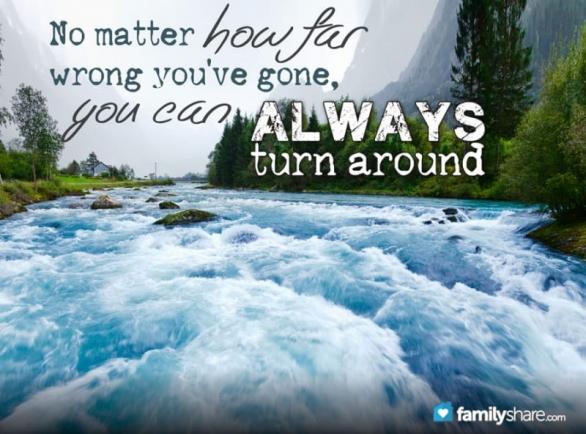
On the Deschutes River - Oregon's rafting mecca - Little Wapanita, Oak Springs and Boxcar are rapids loaded with whitewater and excitement. Shearers Falls, however, is a class VI, and is regarded as unrunnable.
Located at the end of the float, inexperienced rafters wisely take out early to avoid getting caught in the pull of the constricting, accelerating water heading over the falls. As rafts draw closer to the falls, some rafters, however, jump in the river and are unafraid that the pull of Shearers Falls will lay claim on them.
The river, however, changes as it approaches the precipice of Shearers Falls. It gains speed and power and that stretch of water is not safe, unlike the eddies upstream where the water is safe to swim and frolic without fear. No one could be in those turbulent waters without being swept into the waiting abyss.
Standing on the precipice
So it is with addictions. Addicts cannot live their lives standing at the precipice of acting out, where compulsion has its greatest power and strength, and expect sobriety to survive. Yet again, addicts will be pulled into the abyss, losing control to addictive behaviors. To find recovery, they must move upstream to safety.
It is just common sense to stay out of places and situations that lead downstream. Anything else would be like trying to maintain a diet while hanging out in the candy store. It might be possible, just not likely.
Move to calmer water
Moving thoughts, behaviors and actions upstream away from the possibility of acting out, protects addicts from addiction's waterfalls. There is a safe line upstream that marks the area out of addiction, a place safe from addiction's compulsive pull. All the behaviors or thoughts that are practiced in these waters lead to healing. These calm, upstream waters are the waters of recovery. Finding them, and learning to stay in them, is healing from addiction.
Despite knowing the pull and power of addiction and its compulsions, many try to focus recovery work on how to survive while standing at the precipice of the falls (what is known as the art of white-knuckling). They try to maintain some thoughts, behaviors and actions that are actually part of their addictive process. Instead, they should be concerned with how to stay upstream in safe waters.
Finding the waters of recovery is easy. They are located near the Savior. They surround him. Therefore, any thought, behavior or action that takes the addict closer to him, will also keep the addict safe from addictive behaviors. The goal is to hear him say, as he said to the woman with issue that had fought her way close enough to him to touch the hem of his garment, "Thy faith has made thee whole."(Mark 5:34)
When in the waters of recovery, the addict is truly out of the addiction, safe and free from the pull of the falls. There, the addict practices the thoughts and behaviors of recovery and healing.
Set mooring lines
However, as life - like the river - flows, one must work to maintain this safe position by setting mooring lines, if you will, with actions and behaviors that keep the addict anchored safely. These moorings might include attending recovery meetings, working the 12 steps, obtaining a sponsor, meeting with a counselor or spiritual leader.
When thoughts and behaviors cross that safe dividing line into flowing water, the addict again finds himself or herself in the addiction and susceptible to the building power of addiction's compulsive behaviors. The behaviors and thoughts that are just across the line and in the addiction, are not easily recognized. They are full of half-truths that may sound legitimate: "I had a hard day. I am too tired to go to recovery meeting tonight."� That may sound reasonable, but it also may be the addict's voice positioning himself or herself on the wrong side of the safe line.
"We get sidetracked by submitting to temptations that divert us past the bounds of safety. Satan knows our weaknesses. He puts attractive snares on our paths at just those moments when we are most vulnerable,"� said Joseph Wirthlin. "His intent is to lead us from the way that returns us to our Heavenly Father. Sin may result from activities that begin innocently or that are perfectly legitimate in moderation, but in excess they can cause us to veer from the straight and narrow path to our destruction."�
Once the line is crossed, the addict tends to practice thoughts, behaviors and actions that build the compulsion to use the drug of choice, whether that be pornography, alcohol or an illegal substance. For the addict, the compulsion to act out quickly overpowers the will to say no. Going over the falls, at that point, isn't very far away.
Addicts seeking healing should move themselves upstream to the safe waters of recovery. The Savior is there and he is the source of recovery and healing.

